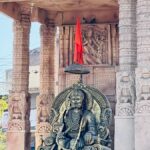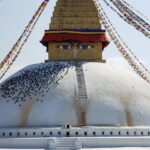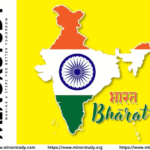Introduction
Pokhara, often called the “Gateway to the Annapurna Region”, is one of Nepal’s most breathtaking cities and popular tourist destinations. Known for its stunning lakes, majestic Himalayan views, adventure sports, and cultural richness, Pokhara is ideal for travelers seeking cheap vacation ideas without compromising experience.
- Introduction
- History of Pokhara
- Fascinating Facts About Pokhara
- Timeline of Pokhara
- Significance of Pokhara
- 1. Natural Significance
- 2. Cultural Importance
- 3. Adventure & Tourism
- 4. Economic Impact
- 5. Educational & Research Value
- 6. Spiritual Role
- Observance & Cultural Activities
- Wishing in Pokhara
- Daily Life Impact
- FAQs About Pokhara
- Important Tips for Visitors
- Importance in Society
- Conclusion
From the serene Phewa Lake to thrilling paragliding experiences, Pokhara offers a perfect mix of nature, culture, and adventure. This guide explores history, fascinating facts, timeline, significance, observance, wishing, FAQs, daily life impact, and societal importance in a human-friendly, immersive style.
History of Pokhara
Origins: Pokhara’s history dates back to ancient times as a settlement along trade routes connecting India and Tibet.
Medieval Era: Became part of the Gurkha kingdom, serving as a rest stop for traders, pilgrims, and explorers.
Modern Era: With tourism emerging in the 20th century, Pokhara transformed into a hub for adventure, trekking, and cultural tourism.
Cultural Heritage: Traditional Newar, Gurung, and Magar communities have preserved customs, festivals, and craftsmanship for centuries.
Fun Fact: Pokhara was originally known as “Pokhare,” derived from the Nepali word for pond, highlighting its natural lakes and water bodies.
Fascinating Facts About Pokhara
Himalayan Views: Offers panoramic views of the Annapurna, Machapuchare, and Dhaulagiri ranges.
Lakes: Phewa Lake, Begnas Lake, and Rupa Lake are major attractions for boating, photography, and relaxation.
Adventure Hub: Known for paragliding, trekking, zip-lining, and rafting, attracting adventure seekers worldwide.
Cultural Sites: Features Bindhyabasini Temple, Tal Barahi Temple, World Peace Pagoda, and ethnic villages.
Caves & Waterfalls: Explore Gupteshwor Cave, Mahendra Cave, and Davis Falls for natural wonders.
Trekking Gateway: Base for Annapurna Base Camp, Ghorepani, and Mardi Himal treks.
Tourist-Friendly: Offers affordable hotels, restaurants, and guided tours, making it ideal for budget travelers.
Serene & Peaceful: Compared to Kathmandu, Pokhara is known for its relaxed pace and tranquil environment.
Timeline of Pokhara
Ancient Era: Early settlements along trade and pilgrimage routes.
Gurkha Period: Incorporated into the Gurkha kingdom, connecting traders between India and Tibet.
20th Century: Emergence as a tourist and trekking hub.
1950s–1970s: Advent of modern trekking tourism, guesthouses, and guided tours.
1980s–Present: Expansion of adventure tourism, cultural preservation, and urban development.
Significance of Pokhara
1. Natural Significance
Pokhara is renowned for its lakes, hills, and Himalayan views, providing ecological balance and scenic beauty.
2. Cultural Importance
The city preserves ethnic traditions, temples, and festivals, giving insight into Nepalese heritage.
3. Adventure & Tourism
A hub for trekking, paragliding, rafting, and exploration, supporting both local economy and global tourism.
4. Economic Impact
Tourism in Pokhara sustains hotels, restaurants, guides, transportation, and handicraft industries.
5. Educational & Research Value
Offers opportunities for study in ecology, culture, and Himalayan geography.
6. Spiritual Role
Sites like World Peace Pagoda and Bindhyabasini Temple serve as centers for prayer, meditation, and spiritual reflection.
Observance & Cultural Activities
Festivals: Pokhara celebrates Dashain, Tihar, Buddha Jayanti, and local Gurung festivals with rituals, dances, and processions.
Temple Visits: Daily rituals and offerings occur at Bindhyabasini Temple, Tal Barahi Temple, and other sacred sites.
Cultural Shows: Traditional Gurung and Magar dance performances are often organized for tourists.
Adventure & Eco-Tourism Awareness: Local initiatives promote responsible trekking, clean lakes, and sustainable tourism.
Wishing in Pokhara
Visitors often make wishes at temples, lakes, and scenic viewpoints:
🌄 “May my journey be filled with adventure, discovery, and unforgettable experiences.”
🕉️ “Wishing for peace, clarity, and spiritual growth amidst nature’s beauty.”
🌸 “May my travels inspire respect for nature, culture, and community.”
These moments enrich the travel experience and connect visitors with Pokhara’s spiritual and natural essence.
Daily Life Impact
Pokhara affects both locals and visitors:
For Tourists: Offers relaxation, adventure, cultural immersion, and photography opportunities.
For Locals: Provides employment in tourism, guiding, hospitality, transport, and handicrafts.
For Society: Promotes heritage preservation, sustainable tourism, and community wellbeing.
Students visiting Pokhara can learn about ecology, culture, geography, and Nepalese traditions, fostering awareness and responsibility.
FAQs About Pokhara
Q1: What is the best time to visit?
A: September–November and March–May for pleasant weather, clear skies, and trekking conditions.
Q2: Is Pokhara budget-friendly?
A: Yes, offers affordable hotels, guesthouses, food, and activities.
Q3: How many days should I spend here?
A: 3–5 days for lakes, cultural sites, adventure activities, and short treks.
Q4: Are guided treks available?
A: Yes, numerous local agencies provide guided treks to Annapurna, Ghorepani, and Mardi Himal.
Q5: Is Pokhara family-friendly?
A: Absolutely, with boating, lakeside walks, caves, waterfalls, and cultural sites suitable for all ages.
Important Tips for Visitors
Dress comfortably and carry layers for hilltop visits.
Hire certified guides for trekking and paragliding.
Carry water and snacks for outdoor adventures.
Respect local customs and religious sites.
Avoid littering and support eco-friendly tourism.
Importance in Society
Pokhara serves as a cultural, economic, and ecological hub in Nepal:
Cultural Preservation: Maintains ethnic traditions, temples, and festivals.
Economic Role: Tourism generates income for local communities and supports small businesses.
Environmental Significance: Lakes, hills, and forests sustain biodiversity and ecological balance.
Education & Awareness: Promotes knowledge about Himalayan ecology, culture, and heritage.
Community Wellbeing: Encourages sustainable tourism and social engagement.
Conclusion
Pokhara is not just a city; it is an unforgettable paradise combining adventure, nature, and culture. Affordable, serene, and visually stunning, it offers travelers a complete Himalayan experience.
🌄 Wishing for You: May your visit to Pokhara inspire peace, joy, and discovery. Let the lakes, hills, and mountains guide your spirit, and every moment remind you of the rich heritage, natural beauty, and warmth of Nepalese culture.








